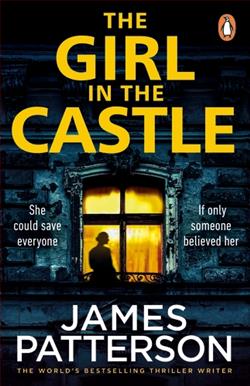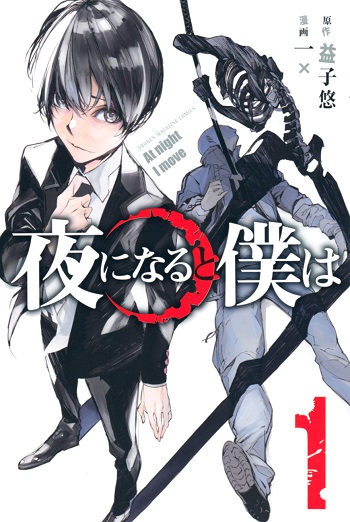Summary

The Girl in the Castle
by James Patterson
My Name is Hannah Dory and I need you to believe me
Now: Hannah is brought to Belman Psych, told she is suffering from hallucinations and delusions. Hannah knows the truth: she must return to the past and save her sister.
1347: Hannah and her village are starving to death in a brutal winter. Hannah seeks out food and salvation in the baron's castle. If she is caught stealing, she will surely hang. But if she and her friends succeed, she'll save everyone she holds dear.
Now: Psych student Jordan is the only person who seems to care, but he isn't sure what to believe. And Hannah has even bigger problems: if she doesn't make it back, her sister will die, but if she keeps going back, she might never escape.
.
Read
The Girl in the Castle on http://kissnovel.net
Martial Peak Reviews
The Girl in the Castle by James Patterson is a gripping tale that intertwines the past and present through the eyes of a young woman named Hannah Dory. The narrative oscillates between two timelines: the harsh winter of 1347, where Hannah struggles to save her village from starvation, and the present day, where she finds herself in a psychiatric facility, grappling with her sanity and the haunting memories of her sister. This duality creates a rich tapestry of suspense, emotion, and historical context that keeps readers engaged from start to finish.
At its core, the novel explores themes of survival, sacrifice, and the bonds of family. Hannah's determination to save her sister is a powerful driving force throughout the story. In the medieval timeline, the stakes are incredibly high; the brutal winter and the threat of execution for theft create a palpable sense of urgency. Patterson does an excellent job of immersing readers in the dire circumstances of the time, painting a vivid picture of a village on the brink of despair. The historical backdrop not only serves as a setting but also as a character in its own right, influencing the decisions and fates of the individuals within it.
The character development in The Girl in the Castle is particularly noteworthy. Hannah is portrayed as a resilient and resourceful protagonist, embodying the spirit of a survivor. Her journey is not just about physical survival but also about confronting her fears and the psychological toll of her experiences. In the present timeline, her interactions with Jordan, a psych student who becomes her ally, add depth to her character. Jordan's skepticism and eventual belief in Hannah's plight reflect the broader theme of trust and understanding. Their relationship evolves as they navigate the complexities of Hannah's situation, showcasing Patterson's ability to create nuanced characters who resonate with readers.
The narrative structure is another strong point of the book. Patterson skillfully alternates between the two timelines, creating a sense of tension and anticipation. Each chapter ends with a hook that compels the reader to turn the page, a hallmark of Patterson's writing style. This pacing keeps the story dynamic and engaging, making it difficult to put the book down. The cliffhangers and revelations are expertly timed, ensuring that the reader remains invested in both Hannah's past and her present struggles.
Moreover, the psychological elements of the story are particularly intriguing. Hannah's time at Belman Psych raises questions about the nature of reality and the reliability of perception. As she battles with the label of hallucinations and delusions, readers are invited to ponder the thin line between sanity and madness. This exploration of mental health is handled with sensitivity, adding another layer of complexity to the narrative. Patterson does not shy away from the darker aspects of Hannah's experiences, which adds authenticity to her character and her plight.
In comparing The Girl in the Castle to other works in the genre, one might draw parallels to novels like The Night Circus by Erin Morgenstern or Outlander by Diana Gabaldon. Both of these stories also feature strong female protagonists navigating complex timelines and emotional landscapes. However, Patterson's approach is distinct in its focus on the immediacy of survival and the psychological ramifications of trauma. While Morgenstern and Gabaldon weave intricate fantasy and romance elements into their narratives, Patterson's story is more grounded in the stark realities of life and death, making it a compelling read for those who appreciate historical fiction with a psychological twist.
The emotional impact of the novel is profound. As readers journey alongside Hannah, they are likely to feel a deep sense of empathy for her struggles. The stakes are not just about her survival but also about the survival of her loved ones, particularly her sister. This emotional resonance is what makes the story so compelling; it transcends the boundaries of time and place, reminding us of the universal themes of love, loss, and the lengths one will go to protect those they care about.
In conclusion, The Girl in the Castle is a masterfully crafted novel that showcases James Patterson's storytelling prowess. With its rich historical context, well-developed characters, and a gripping narrative structure, it is a book that will captivate readers from the first page to the last. The exploration of survival, family bonds, and the psychological complexities of Hannah's journey make it a standout in Patterson's oeuvre. For those seeking a blend of historical fiction and psychological drama, this novel is a must-read that will leave a lasting impression.
























Reviews 0
Post a Reviews: